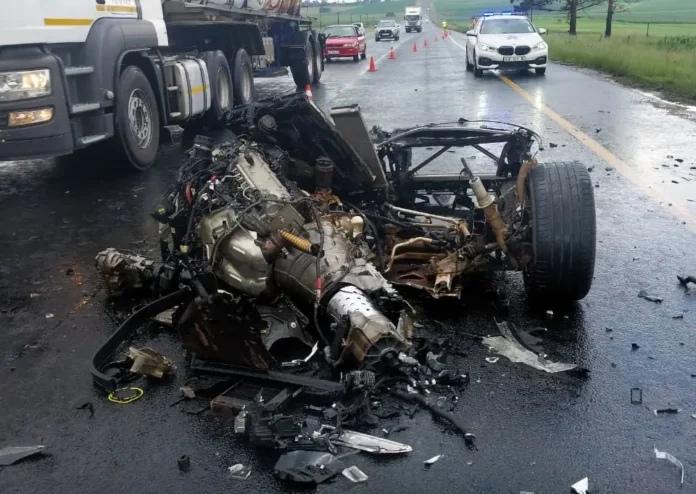A devastating head-on collision on the N4 Toll Road between Belfast and Wonderfontein in Mpumalanga on Tuesday afternoon claimed the lives of seven people, including a two-year-old child. The accident, which occurred around 2 pm, involved two sedans.
Initial reports from the Mpumalanga Department of Community Safety, Security, and Liaison suggest that one vehicle lost control, veering into the opposite lane and colliding directly with the other car.

The impact of the crash was catastrophic. Five people perished in one vehicle, while two died in the other. Tragically, both drivers were among the fatalities. The youngest victim was the two-year-old. One seriously injured passenger from one of the vehicles was swiftly transported to a nearby hospital for emergency treatment.
Mpumalanga Community Safety, Security, and Liaison MEC Jackie Macie expressed profound sorrow over the incident. He stated, "It is regrettable to lose lives in crashes that are mostly avoidable if caution is applied."

He also extended his condolences to the families of the victims and wished the injured passenger a speedy recovery. MEC Macie highlighted the N4 Toll Road's significance as a key route in the province, reiterating his call for increased caution from motorists.
He added, "The N4 Toll Road is one of the priority routes. We will continue to put plans in place to reduce deadly crashes. However, despite the plans that we put in place, motorists still need to obey the rules and play their part to enhance road safety.”
Department spokesperson Moeti Mmusi provided further details, confirming the early indications that one car lost control, leading to the head-on collision. He stated: “Five of the deceased were occupants of one of the sedans while the other two victims were in the other sedan. The deceased include drivers of both vehicles. One seriously injured occupant in one of the vehicles was rushed to the nearest hospital.”

Mmusi also indicated that an investigation into the crash was underway, acknowledging that reckless and negligent driving could not be ruled out at this stage.
The KwaZulu-Natal Department of Transport is providing support to the affected families, assisting with funeral arrangements and ensuring that necessary paperwork is completed for Road Accident Fund (RAF) claims. The Department of Social Development is also involved, offering additional assistance to the grieving families. The province experienced a significant number of road fatalities on Monday, with close to 20 deaths reported.
In a separate initiative, a large-scale multi-disciplinary roadblock in uMlazi resulted in charges against over 40 motorists and the search of more than 700 vehicles. This operation was part of a broader road safety campaign focusing on New Year revellers' safety. The combined incidents highlight the urgent need for continued efforts to improve road safety across the country.












